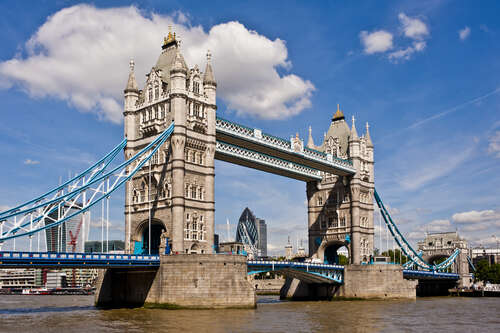
An accusation often levelled at the modern era is that it’s one of waste: that we are a throw-away society, over-consuming off paper plates with disposable cutlery. If this is the case, then we should take inspiration from our not-so-distant ancestors, the Victorians. They really knew how to build things to last, especially in London.

If you’ve taken the Tube, crossed the Thames or even gone to the toilet in London recently, then you’ve used something Victorian.
But it wasn’t us they had in mind when all these durable things were built: in their own time, the era’s city planners faced plenty of infrastructure problems of their own. In the 19th century, London was the largest city in the world, and its population more than tripled from just under two million in 1840 to almost 6.5 million by 1900. With the fabric of the city facing unprecedented burdens, the engineers of the day began to build.
The Tube
There are few things as synonymous with London as the Underground. Begun during the second half of the 19th century, the system was created in part to deal with the overcrowding that population growth had brought to the city’s roads.
First opening in 1863 the original Metropolitan Railway was just four miles of route, between Paddington and Farringdon. But other lines swiftly followed: the District arrived before the decade was out, and what would become the Circle line was completed in the 1880s. The first deep-level Tube, a stretch of the Northern line, opened in 1890.
More than a billion journeys may be taken on the London Underground every year – all the more impressive when you consider that the engineers maintaining and upgrading today’s network are still working on a system first opened while Abraham Lincoln was president.
Sewer system
The density of London’s population also created huge sanitary problems. The Thames was an open sewer, and the streets were little better. Through the Miasma Theory of disease, deadly illnesses such as cholera were blamed on ‘bad air’ – and not on the fact that people were relieving themselves in their drinking water. Something had to be done.
Following a particularly warm and noxious few months in 1858 – a period known as The Great Stink – the local government of the day rolled its sleeves up. The Metropolitan Board of Works commissioned its chief engineer Joseph Bazalgette to create a new system of sewers and pumping stations.
Bazalgette installed 82 miles of “intercepting sewers” parallel to the river Thames, with a further 1,000 miles of interconnected “street sewers”. Most used gravity to funnel waste to the east; but a series of pumping stations were included, to offer a helping hand. All this did wonders for London’s sick and no doubt the city’s smell – and created the Embankment in the process.
The system has been used ever since. The historian Peter Ackroyd puts this relatively unknown engineer alongside giants such as Christopher Wren in his pantheon of London heroes.
With London’s population at an all-time high, dealing with the capital’s waste is top of the agenda again, and the authorities are now building the Thames Tideway tunnel under the river. Let’s hope it lasts as long as the 150-year-old Victorian system.
Bridges
You can’t really go anywhere but the loo to appreciate London’s sewage system – so if you want to ogle some Victorian London engineering, why not visit the river?
Nearly two-thirds of the 33 bridges that cross the Thames were built by those intrepid engineers, and they include nearly all the best lookers: the Albert Bridge, the Hammersmith Bridge, to name but two.
In Tower Bridge, the last to be built by the Victorians, we’ve got both a looker and an incredible piece of engineering. Not only does it draw visitors from across the world, but the bridge can also raise its central section, to allow large boats to pass. A functional beauty.
Internationally, Victorian Britain gained the unfortunate – and accurate – reputation of being arch-colonialists. Domestically, though, they did us a lot of good, building exceptional structures that are still in use a century and a half later.
We can only hope that the massive infrastructure projects of today will last nearly as long. HS2 and the Elizabeth Line, the ghost of Isambard Kingdom Brunel is watching.
Read more: The Victorian Hyperloop: The forgotten pneumatic railway beneath the streets of London]






